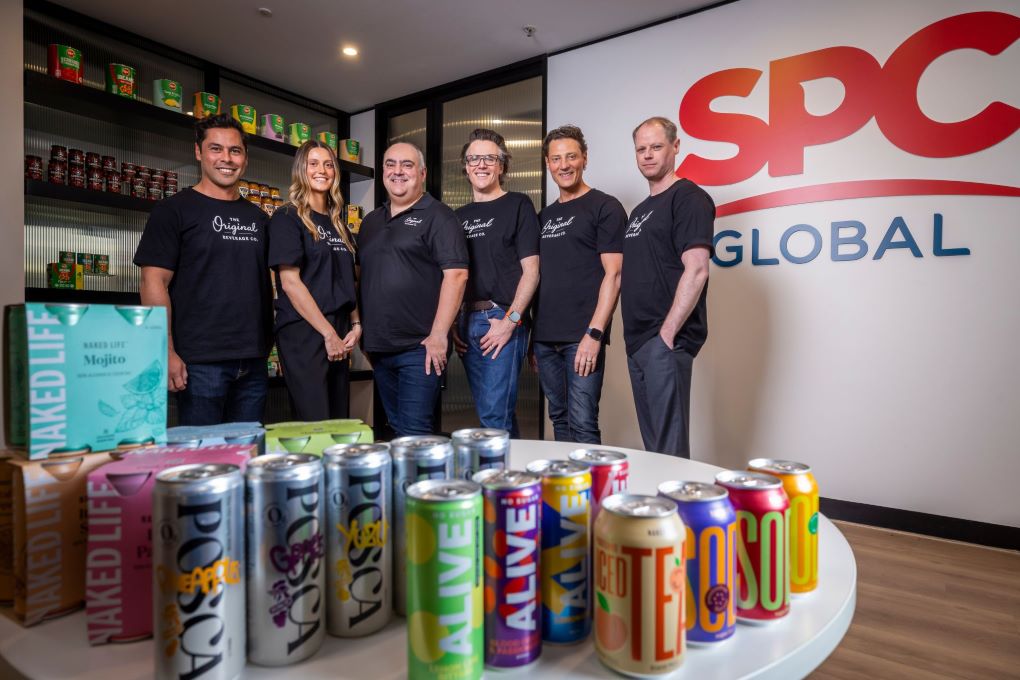IRELAND. Mars Wrigley International Travel Retail (MWITR) and ARI have launched their first joint ‘transaction zone’ in travel retail as The Moodie Davitt Report discovered during an inauguration event at Dublin Airport yesterday (24 January).
At Dublin Airport Terminals 1 and 2, a new queue-system and manned transaction zones are in place, with an optimised cross-category portfolio that aims to better fulfil traveller needs.

As shared by the brand owner during TFWA World Exhibition in October last year, the transaction zone area is a focus of its efforts to convert more travellers into shoppers.
Around 500 million travellers buy products in travel retail every year; this in turn creates 500 million opportunities, while checking-out, to drive incremental purchases, MWITR noted.
Many of these travellers are looking for “rewarding and recharging moments of self-consumption” on their journey, and the opportunity for the confectionery category, as well as others, when well executed, is clear, the company added.
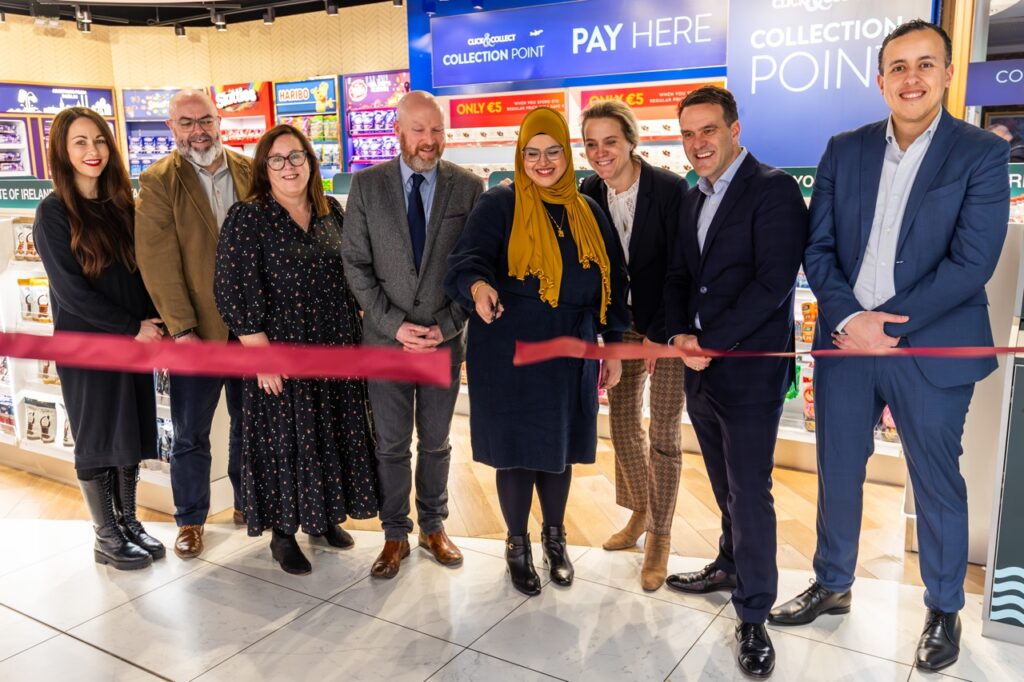
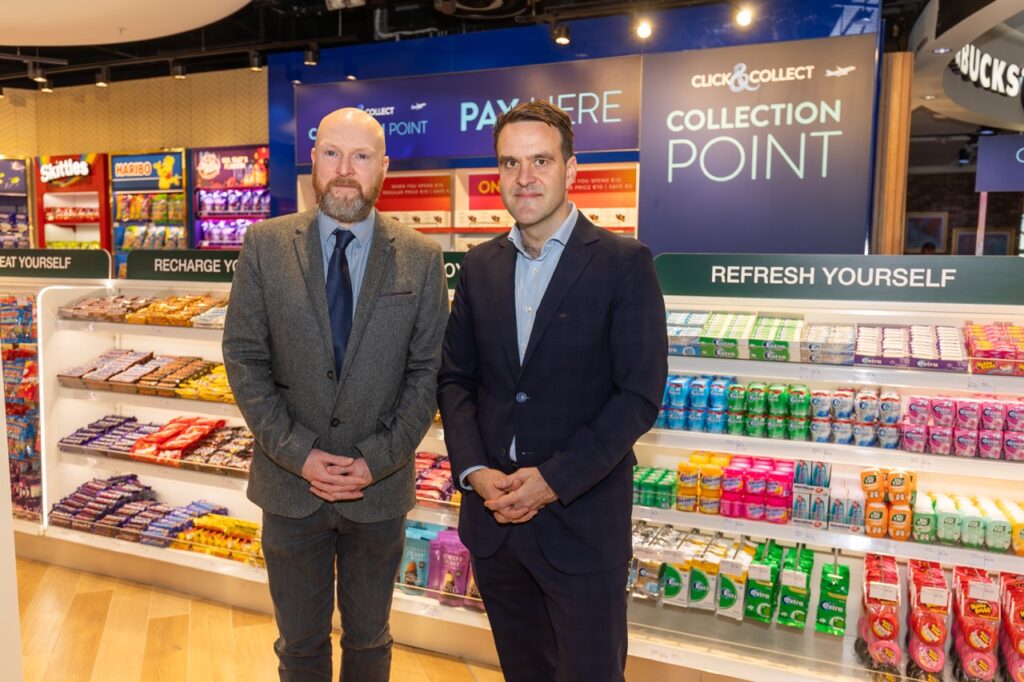
MWITR Sales Director Marcus Hudson said: “I am thrilled that in close collaboration with our long-term partners at ARI we are bringing our first transaction zones of such scale in travel retail to life at Dublin Airport. Unlocking the potential of the transaction zone will enable us to further grow the confectionery category within our channel and inspire more moments of happiness for travellers globally.”
Click on the Podcast above for reaction to the new transaction zones from Mars Wrigley International Sales Director Sales Director Marcus Hudson and ARI Global Head of Liquor, Tobacco, Confectionery and Souvenirs Paul Hunnisett
Elaborating on the thinking behind the transaction zones, Hudson told The Moodie Davitt Report: “Mars has been working with transaction zones in domestic markets for many years, building out their capabilities, and it is something we have always believed in.
“Building on this in travel retail is relatively recent. Our studies show that about half of travellers are looking for something for individual consumption, to recharge or reward. What we have seen is that the execution of transaction zones in travel retail has been inconsistent. Many retailers have done a good job, others didn’t see it very strategically so we identified it as an opportunity.
“In the second half of 2023 we were looking for a partner to work with us on the transaction zone. We know that 70% of increased sales comes from us growing the category, so we wanted a category partner. ARI were ambitious about developing this area of their business, we developed a prototype and it’s the first time we are doing it at scale in an airport. It’s a testament to our long partnership with ARI.”
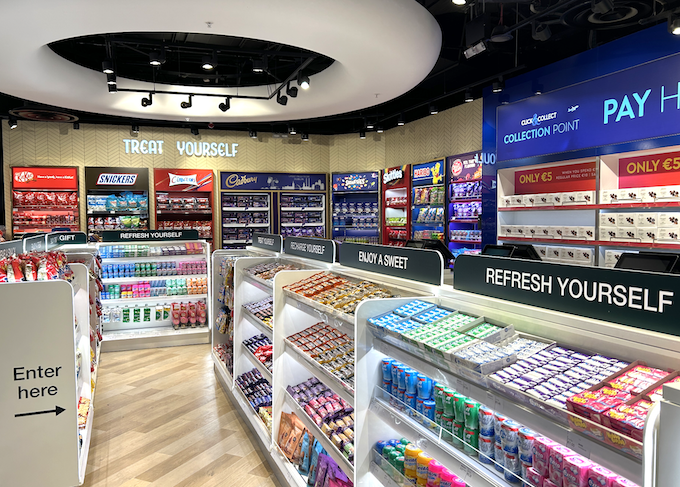
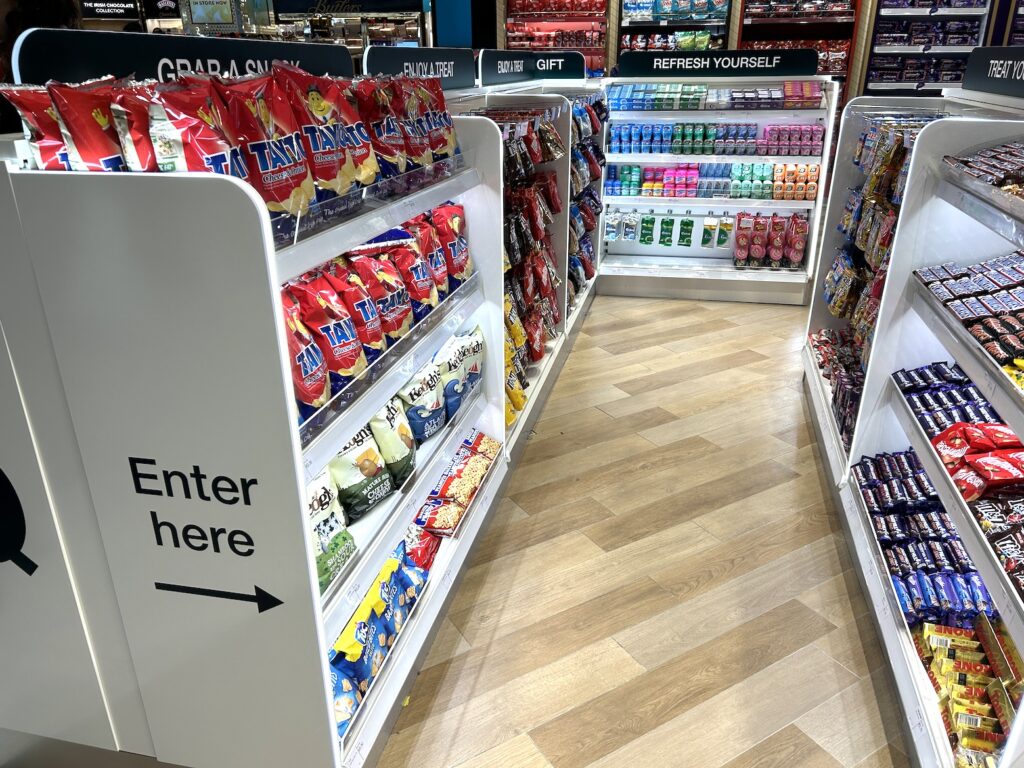
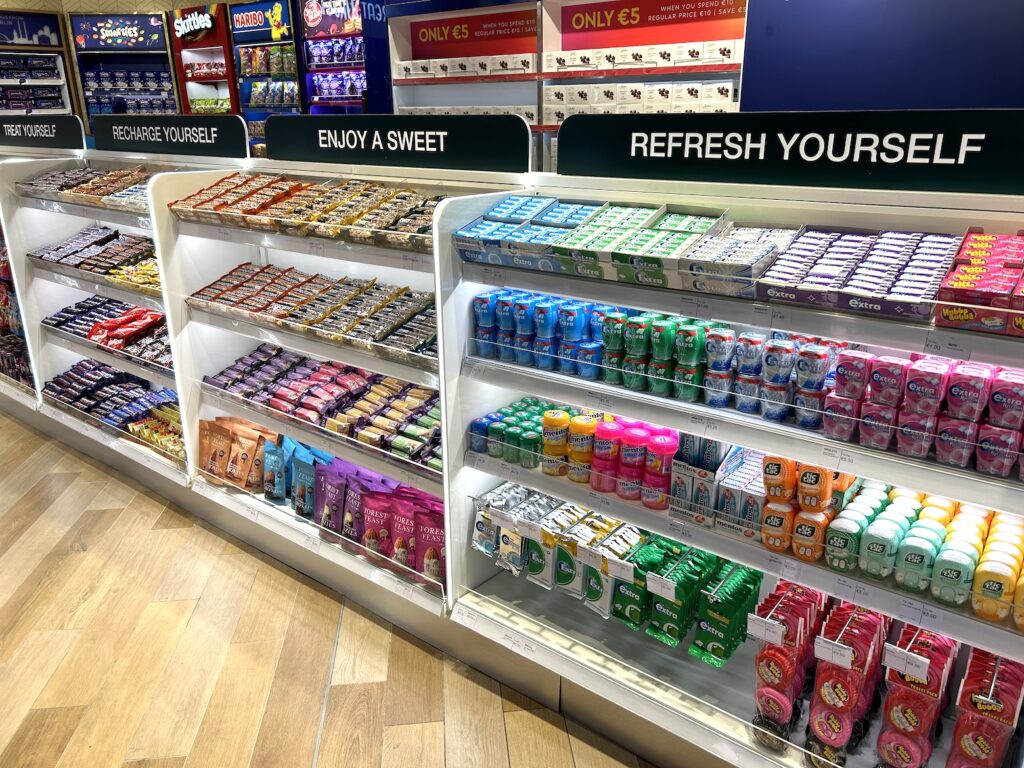
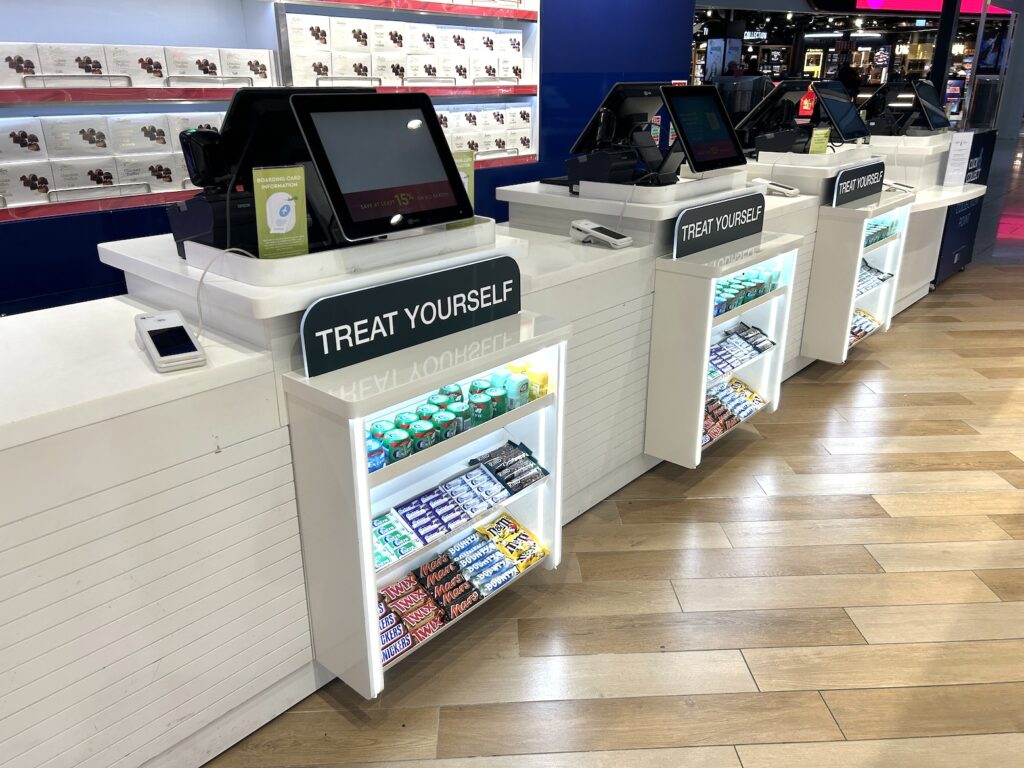
“We are delighted to unveil these innovative transaction zones at our stores in Dublin Airport. We believe that convenient and accessible touchpoints such as these can elevate the travel experience for our customers,” said ARI Global Head of Liquor, Tobacco, Confectionery and Souvenirs Paul Hunnisett.
“Working with our close partners at MWITR on this project has been an enjoyable and rewarding initiative. We eagerly anticipate the positive response from our customers in Dublin, with implementation of new transaction zones in our stores in Larnaca, Cyprus as well.”
Hunnisett told The Moodie Davitt Report: “Each time we have redeveloped a store we have added a new queuing system and we’ve had some success. When Marcus and his team approached us we could see it was an opportunity to give our customer a better experience.
“What was interesting to us was the conversation about category growth, not just brand growth. Every supplier is represented. Also, it’s a cross-category approach including soft drinks, travel essentials and more. We needed to ensure it was done objectively and impartially.”
Right offer, relevant touchpoints
Purchases made within the transaction zone are often highly impulse-driven and for immediate self-consumption, said MWITR. To meet specific traveller needs, the new approach includes new innovations to drive incremental sales within the snacking category. These include Hubba Bubba, and new formats of Extra within the gum category, along with the addition of healthier snacks with Be-Kind.
Hudson said: “There are some key elements that are really important in a transaction zone at an airport. You need to reward, refresh and remind. We know from domestic markets that gum sits very much in the refresh category, with candy as reward, alongside healthy snacking, an area we are all moving into much more.
“We also work with the retailer to reflect the power categories of that specific store in the transaction zone. Here that means having Irish heritage brands, which you see as you approach the zone, and these are strong gifting reminders. Then you enter the space with gum as the refresh option, and it moves into snacking and self-treat. And there are many reminders as you move through the zone.
“This is the first such zone and with trial comes lessons. We might move certain categories around or emphasise different ranges. That will come in time and we will build as we get the proof points that we can take elsewhere.”
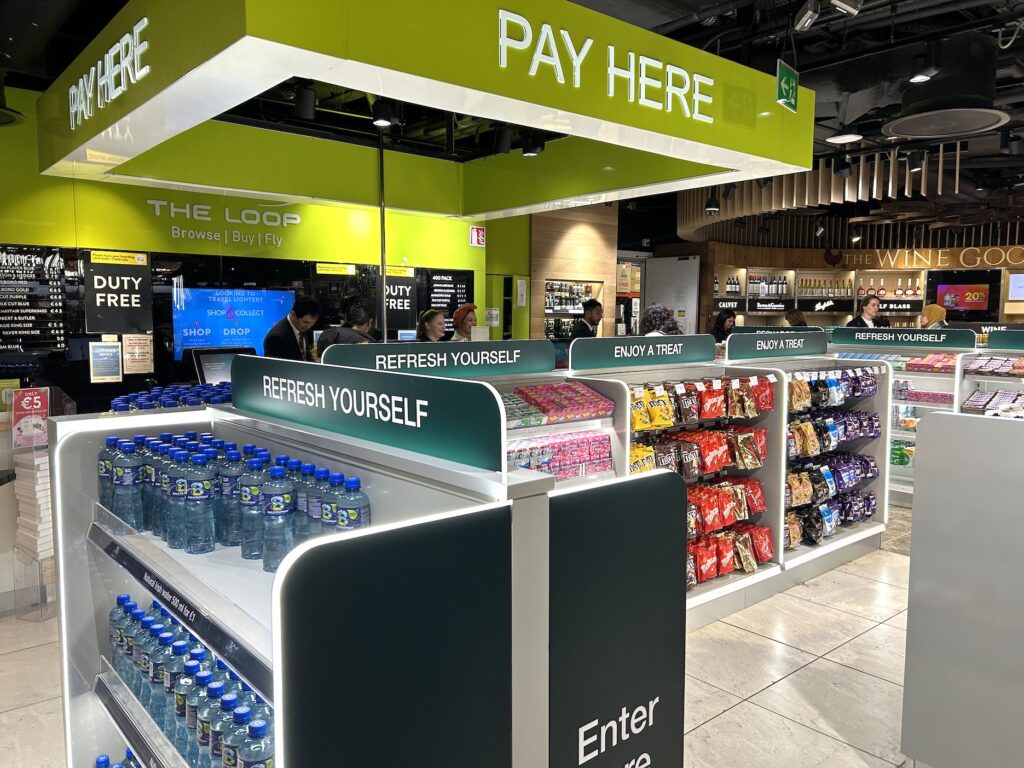


Crucially, the introduction of the transaction zone has delivered a sharp rise in sales and conversion. Hunnisett said: “In the first three weeks in T2, transaction zone sales are 50 points ahead of the growth of the [confectionery & food] category. We knew it would do well but it has surprised us and we are very pleased. All sub-categories have increased with gum showing significant growth.”
He added: “Our strategy for many years has been to get a piece of confectionery into every basket. This initiative helps us towards that goal, and it can deliver an extra two Euros, five Euros, ten Euros to many transactions.”
Now attention turns to fine-tuning the offer and expanding the reach of transaction zones to new locations. Hunnisett said: “We can do more to get the range right on impulse products in travel retail so we’ll think about that. We would also like to analyse what people are buying alongside confectionery and how these zones affect overall purchases.
“The customer experience is key and this is a lovely way to close this part of the journey. It’s a way for them to leave our store with joy on their way.”
Having noted that Larnaca is the next destination for transaction zones, Hunnisett said that ARI is earmarking more space for them in other redevelopments it is planning.
“We see a big opportunity. In Dublin T2 the focus is on confectionery, in T1 it is on liquor and confectionery which share a till point, so the offer differs. But we have a separate liquor shop in T2, so we could do a great job there with a transaction zone. And we plan to adapt to passenger needs at locations in other markets.”
On the wider strategy, Hudson said: “We want to have the right product at the right price, and the right offer, at every relevant touchpoint for everyone. So in any given store there should be no potential points of conversion that are not tapped. The transaction zone is the point at which we can remind them that they need a gift or a treat.
“A lot of good things can happen when you try to upsell in this way. We have been impressed by the early performance but then you realise that it was always an untapped opportunity.
“And that is why we get excited about the food & confectionery category in travel retail. We have the ability to drive impulse purchase incrementally. It’s a low maintenance, good margin, incremental category. And you can do that by putting a smile on people’s faces too.”
The launch at Dublin Airport is the first of many transaction zone areas that will be rolled out globally in 2024 within the channel.
Hudson said: “Our goal is that by the end of 2024 we will have many such bold transaction zones implementations, as well as a more consistent and effective transaction zone strategy in place in every airport.
“Working closely with our retail partners across the globe, we believe that with our transaction zones, MWITR can turn the traditional point-of-sale/cash till area into a significant revenue generator for travel retailers, supporting a category conversion growth of over +20% in the next years.”








